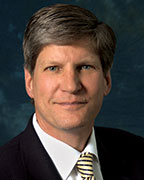
What I Brought Home
An Opportunity for Collaboration
In September of this year, I was in St. Petersburg, Russia, at a meeting of the General Assembly of the International Organization for Standardization (ISO), where representatives from 128 countries gathered to discuss how standards development could be made simpler, faster and better. Stakeholder engagement, customer engagement, the protection of intellectual property, attracting new volunteers and providing first class services for members were the topics that concerned standards leaders from around the world. The issues before us were universal, common to us all. As the presentations drew us more and more into the day-to-day business of developing standards, the ideological differences between us became less and less noticeable.
We do have a history of differences. For more than 60 years, the international standards community has been characterized by its ideological differences and by its division into two main institutional frameworks: the one based in Europe that favors standards development by empowered delegations and the one based in the United States that favors the empowerment of individuals. After years of rigorous and sometimes acrimonious debate as to which of these is the right one or the only legitimate one, neither system has converted to the other, nor are they likely to.
But as anyone who has traveled a great deal can tell you, people are more alike than they are different. In Russia, we were just standards developers, trying to do a better job, living in a world of markets and manufacturers gone global, and what we were talking about was service to our members and customers.
ASTM International is the organization it is today because its sole mission has been to meet the needs of its members and customers. Here's an example: Duplication and redundancy in the standards world is wasteful for standards development organizations and governments and burdensome for business. And so ASTM International and ISO began to reference each other's standards, incorporating them into existing standards documents instead of duplicating them. In a collaborative effort, the two organizations increased the range of technology in each selected document and created a new customer-user base. We built on our strengths, and our members benefited.
Other U.S.-based standards organizations have made their own collaborative arrangements with ISO and the national standards bodies of other countries. Collaboration between the two systems in the service of members and users is not a new concept. I thought about this when I came home from my trip, and asked myself why we couldn't use the same concept to create other kinds of benefits.
In St. Petersburg, we heard about the need for more collaboration between the European-based standards organizations, ISO, IEC, ITU, CEN, and CENELEC,1 but I believe there is a need for collaboration between the systems that sit on opposite sides of the Atlantic Ocean. With the Transatlantic Trade and Investment Partnership initiative between the United States and the European Union2 as a backdrop, the international standards community has an extraordinary opportunity - indeed, a responsibility - to do more for the developers and users of its standards, and I believe this is the moment. There are so many challenges ahead. We have to improve the use of technology to accelerate standards work, improve communication and coordination to reduce duplication and redundancy, improve our interactions with industry and government, invent new methods for preventing the misuse of intellectual property, and create new methodologies for developing case studies on the economic impact of standards.
The members of the international standards community can approach these challenges as separate entities, or collaborate and solve them as a community. I believe collaboration is the practical, pragmatic way forward, but it must be on a global scale, because that's where our members are, and that's where our users are.
There is no downside to improving the delivery of health, safety and a better environment to the world. There is no downside to putting aside debates that get us nowhere. When I think back to that meeting in Russia, I see only standards developers, just trying to do a better job, living in a world of markets and manufacturers gone global, and talking about service to their members and customers, just a small step away from collaboration. That's what I brought home.
References
1. IEC, ITU, CEN and CENELEC are, respectively, the International Electrotechnical Commission, the International Telecommunication Union, the European Committee for Standardization, and the European Committee for Electrotechnical Standardization.
2. See Plain Talk, "TTIP and Dancing Elephants," ASTM Standardization News, Vol. 41, No. 5, Sept./Oct. 2013, p. 8.
James A. Thomas
President, ASTM International
Go to other PlainTalk articles.
 SN Home
SN Home Archive
Archive Advertisers
Advertisers Masthead
Masthead RateCard
RateCard Subscribe
Subscribe Email Editor
Email Editor